Creating a convincing outfit, particularly when it comes to crafting armor, can be a hefty financial undertaking. This will explain cost-effective methods and strategies for crafting your cosplay armor, making this creative pursuit accessible even on a budget.
Cosplay armor is often seen as one of the biggest challenges in costume creation due to its complexity and the wide range of materials involved. A common choice for creating this form of wearable art is Thermoplastics such as Worbla or PVC.
These materials can be shaped into any desired form using heat guns, making them ideal for crafting intricate designs and details. However, thermoplastics come with their own set of expenses.
Other alternatives include EVA foam or craft foam which are lighter on the pocket but require skills such as patterning and mold-making. The process involves using tools like Dremel for carving details into foam pieces before sealing them with primer or sealant such as Bondo.
Foam armors are then usually painted over with acrylic paint for coloration followed by weathering techniques that add realistic effects like age and battle damage. Yet another category under cosplay armor creation is the world’s oldest plastic – celluloid also known under its modern evolution name: Acrylic plastic paint; often used due to its versatility in application methods including airbrushes, paintbrushes or even sponges apart from being cost-effective.
But worry not! No matter what your material preference may be — EVA foam, Worbla’s thermoplastic sheets or PVC pipes — we shall delve deeper into each aspect including tools like heat guns and hot glue guns you might need along this exciting journey while maintaining a close eye on costs associated with each step along the way.

Understanding Cosplay Armor
It’s crucial to first gain a comprehensive understanding of cosplay armor. At its core, cosplay armor is a custom-made ensemble crafted with the intention of embodying and mirroring the attire of a particular character from various media platforms.
This ranges from video games to movies and even traditional fantasy literature. The creation process can be as simple or complex as one desires, with some opting for minimalistic designs and others pouring countless hours into elaborate, intricate pieces that often steal the show at cosplay conventions.
After cutting out the patterns using scissors or a Dremel tool, they are traced onto sheets of chosen material such as PVC (Polyvinyl Chloride) which is also favored by many craftspeople for its robustness against wear and tear. Sections are then cut out and formed meticulously over time into three-dimensional shapes by applying heat (often using a hot glue gun), then cooled off to set their final form.
The newly formed armor parts usually undergo multiple stages before completion. First comes sealing with either PVA glue or specialized sealant products which prepares them for painting by providing a smooth surface that paint can adhere well on.
Following this is priming, essentially prepping the surface to accept paint evenly without soaking in excess amounts or causing discoloration- primer creates an ideal basecoat so acrylic paints can exhibit their full vibrancy. However, painting isn’t merely about coverage but often involves weathering techniques too – adding faux effects like rust or dirt–to make armors appear battle-worn or aged.
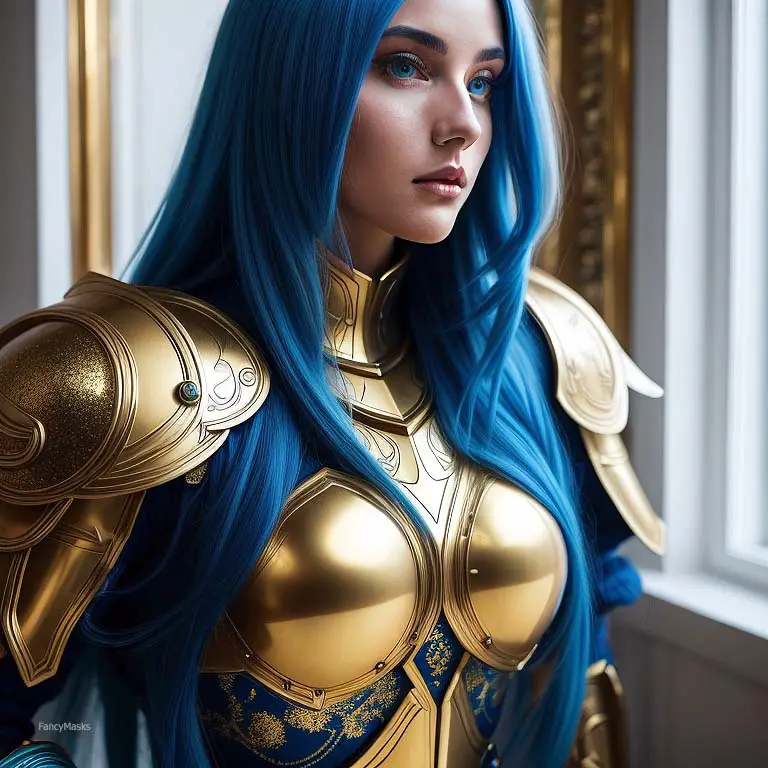
Subsequently comes mold-making if copies need production or if certain parts must replicate specific shapes repeatedly; Bondo is an example product used here due to its putty-like nature allowing repeated reuse after hardening. Understanding cosplay armor construction revolves around familiarizing oneself with various materials like craft foam or PVC along with recognizing each step involved from patterning onwards—be it sealing before painting or weathering post-painting-to get that perfect look just right.
Key Materials for Cosplay Armor
Creating your own cosplay armor can be a transformative and rewarding experience, but it is crucial to know what materials you will need as the foundation of your costume. EVA foam is one of the most frequently used materials in the cosplay community and for a good reason. This ethylene-vinyl acetate polymer is lightweight, flexible, durable, and relatively inexpensive – ideal for any budget-conscious cosplayer.
It can be manipulated into various shapes with the use of a heat gun, making it perfect for creating everything from armor plates to intricate detail work. In addition to EVA foam, another popular material among cosplayers is PVC or Polyvinyl Chloride.
This versatile plastic sheeting can be molded into shape when heated and retains its form once cooled down. It’s particularly useful for creating rigid pieces of armor that require more structural integrity than foam alone can provide.
However, its rigidity also makes it more challenging to work with than EVA foam—it requires precise patterning before heating up with a heat gun or other sources. Thermoplastics such as Worbla have become increasingly popular in recent years due to their flexibility and ease of use.
Like PVC and EVA foam, thermoplastics can be heated then sculpted into desired shapes or forms. But unlike other materials, Worbla becomes adhesive when heated which eliminates the need for glue in certain applications—though many cosplayers will still utilize a hot glue gun for added security or intricate detailing.
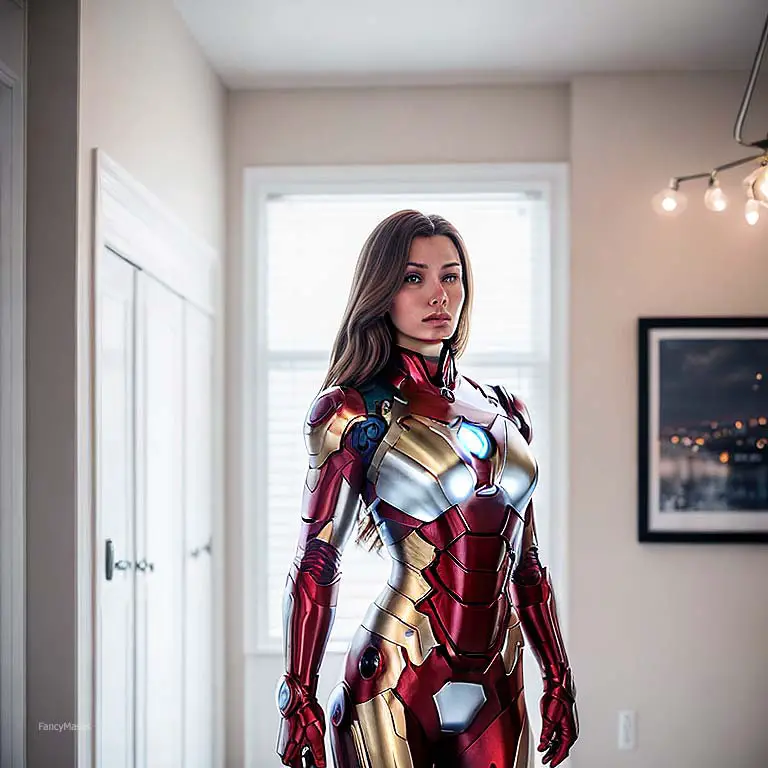
It’s not all about large-scale components; smaller items play an equally significant role in crafting cosplay armor. Craft foam offers another excellent option for detail work or thinner parts of your costume given its finer texture compared to thicker foams like EVA.
Acrylic paint provides color customization while sealant ensures that your masterpiece is protected against wear-and-tear during conventions or photoshoots. For those who want to level up their cosplay game even further, mold-making may become an essential part of their creative process; using materials like Bondo (a type of body filler), you can create detailed molds that take your costume from basic to breathtakingly realistic.
No list would be complete without mentioning tools specific to perfecting finishes on cosplay armors such as Dremel (a handheld rotary tool) which allows you precision-cutting or sanding capabilities; primer that prepares surfaces ensuring optimal paint adhesion; and techniques like weathering which add aged effects giving authenticity to your creation. Whether you’re working with craft foams or thermoplastics like Worbla—having the right tools along with knowledge on how best to use them will make all difference in bringing your vision alive within budget constraints.
Tools of the Trade: Essential Equipment
To embark on the journey of crafting your own cosplay armor, a fundamental step is equipping yourself with the right tools. The list may seem daunting at first, but it will empower you to transform materials into works of art that embody your favorite characters.
Each tool serves a unique purpose in the process and contributes to the overall quality and aesthetics of your armor. A quintessential tool in cosplay armor creation is a heat gun.
This device is typically used with thermoplastics like Worbla and EVA foam, as it allows you to manipulate these materials into your desired shapes and forms. Crafting bespoke pieces from these materials without a heat gun would be an arduous task, as they require high temperatures for malleability.
Another indispensable tool is a hot glue gun which fastens pieces together securely, while ensuring longevity of your armor’s structure. When using EVA foam or craft foam for construction, tools such as Dremel come into play for refining edges and adding intricate details to elevate realism of your craft.
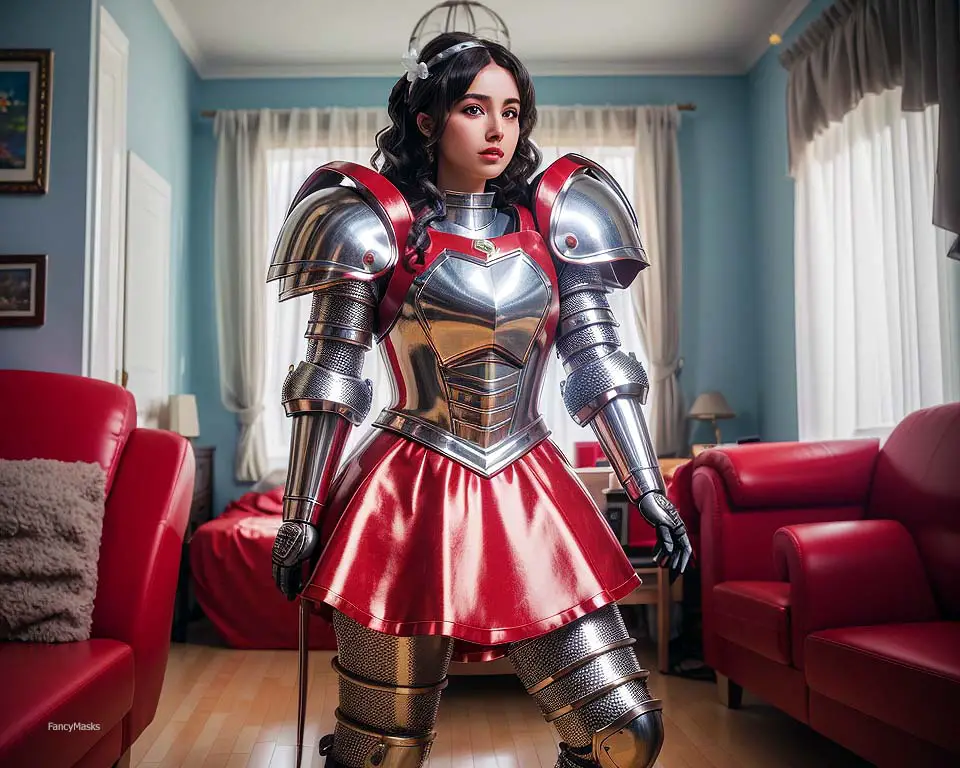
It aids in weathering processes too – creating an illusion of usage and age that adds depth to your armor’s story. Also crucial are tools for patterning; this includes basic items such as rulers, compasses and tracing paper that assist in achieving precision in design.
Moving forward to painting stage involves several other essential instruments. Primer acts as foundation before paint application; it ensures smooth surface while enhancing paint adherence resulting in uniform color distribution.
Acrylic paint offers wide range of colors suitable for mimicking various metal hues found in armors while giving creative freedom on customization. To ensure protection from wear-and-tear over time due constant handling or exposure during conventions, sealant plays an important role by providing protective coating preserving color vibrancy even under harsh conditions.
Mold-making also comes under this category when considering cosplay armory; silicone molds are common choice due their easy usage but requires careful handling as well as storage considerations for reuse purposes later on if desired. Completing any cosplay project involves stages where Bondo (a type of filler) becomes invaluable – its functions ranges fixing mistakes made during construction phase filling gaps between interconnected parts which enhances overall solidity when dry thereby leading improved longevity besides visual appeal enhancing weathering effects making piece look more authentic than ever before!
PVC although not exactly classified among traditional tools per se must also be considered due its versatility being used both base material itself various fittings assembly process – its affordability further justifies inclusion within budget planning strategies discussed above. Having right set tools equally important proper planning acquiring quality materials constructing cosplay armour efficiently effectively thereby saving time hassle down line achieving stellar results every time!
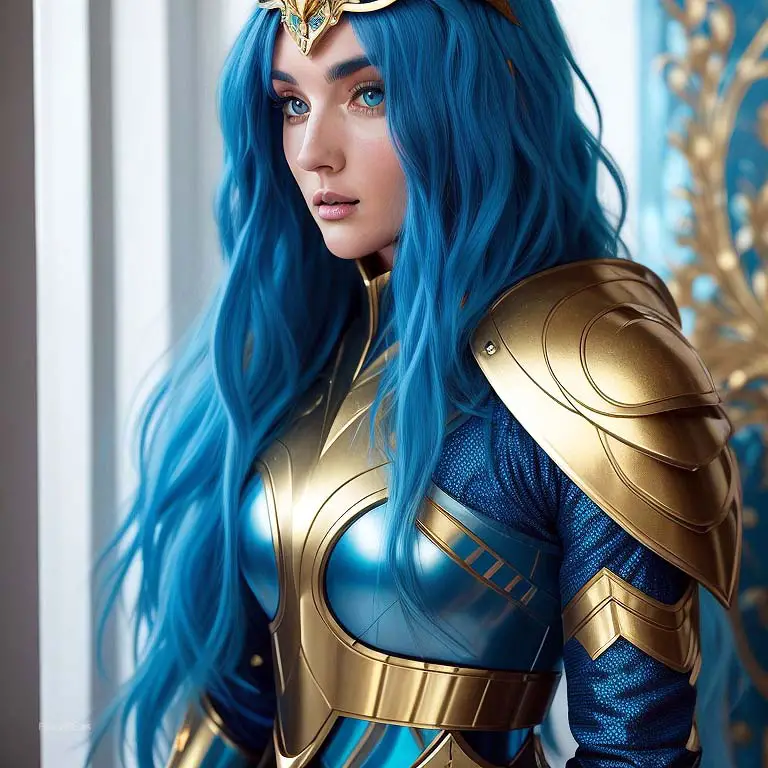
Cost Breakdown: Materials
Cosplay armor materials can vary significantly depending upon the desired end result in terms of aesthetics, durability, and overall presentation. One of the most commonly used materials is EVA foam.
This is a versatile material that can be easily shaped using a heat gun and cut with a simple hobby knife. It holds shapes well once cooled, making it ideal for creating intricate designs or armor pieces that need to maintain their form.
EVA foam is also lightweight, comfortable to wear, and relatively inexpensive. The cost of EVA foam varies by thickness and sheet size but expect to budget between $10-$50 for a modest project.
Another prevalent material within the cosplay community is Worbla, a brand of thermoplastics particularly popular among cosplayers due to its remarkable flexibility when heated. Using tools like a Dremel or heat gun allows you to shape Worbla into virtually any form you desire.
Once cooled, it holds its shape with formidable strength yet remains lightweight enough for comfortable wear over extended periods. However, its versatility comes at an increased cost compared to EVA foam; depending on the amount needed, anticipate setting aside approximately $40-$100 in your budget.
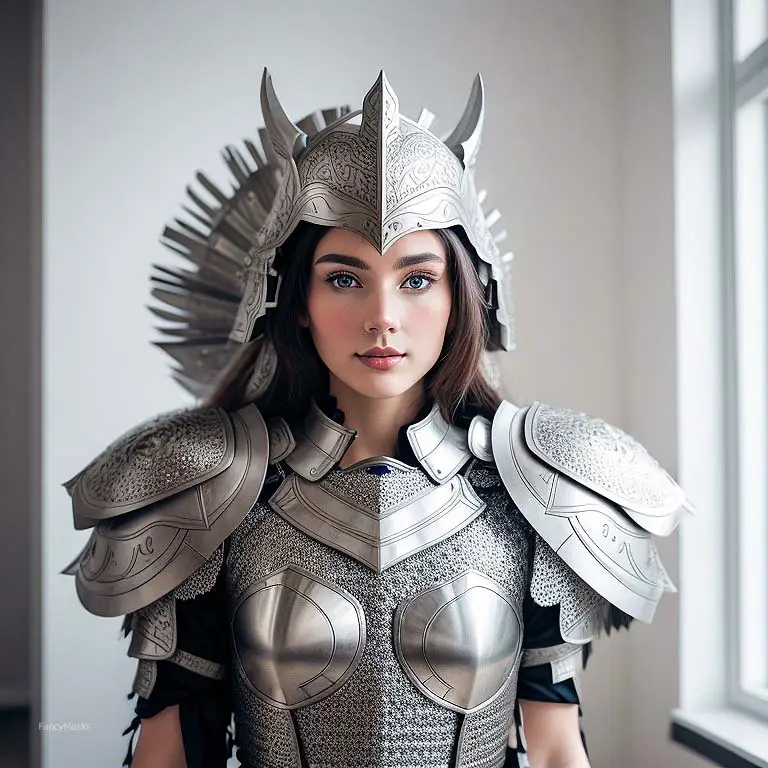
Other materials used regularly are craft foam and PVC (Polyvinyl Chloride). Craft foam can be used for adding details or layered effects on armor while PVC sheets prove handy when crafting more rigid elements or props with structural integrity requirements such as swords or staffs.
Bondo might be considered if you’re looking for smooth finishes on your armor pieces before applying primer and acrylic paint for coloring detail. To bring depth and realism to your cosplay armor, crafters often use techniques such as weathering using paint washes or dry brushing methods which all require additional materials like sealants as well as various colors of acrylic paint – so don’t forget these in your cost breakdown!
Mold-making may come into play when you plan on creating multiples of one piece—like buttons or rivets—which will require silicone molds and casting resin. Hot glue guns are indispensable tools in any cosplayer’s arsenal too; they’re perfect for quick fixes or securing smaller elements onto larger pieces without needing substantial drying times like some adhesives do.
Patterning forms an integral part too; whether paper-based patterns bought online from established cosplayers sharing their designs -or- using duct tape dummies along with cling wrap/saran wrap method where one creates patterns directly off their body measurements resulting in custom-tailored fittings but necessitating expenditure towards those supplies thus adding onto material costs. While everyone has different needs based on their chosen character design as well as personal preferences in crafting styles/materials available there’s little doubt that these contributions will give an idea about costs associated with building DIY cosplay armor.
Cost Breakdown: Tools
As you delve deeper into the world of cosplay armor fabrication, you will soon recognize that owning a specialized set of tools is just as vital as possessing the right materials. One essential tool that deserves mention is the Dremel rotary tool. This versatile piece of equipment is used for drilling, grinding, sanding, carving, and even cutting through materials like EVA foam and PVC (Polyvinyl Chloride).
The range of attachments available for Dremels makes them indispensable in intricate detailing and crafting complex shapes. Another crucial tool in your armory ought to be a heat gun.
These devices are customarily used in conjunction with thermoplastics such as Worbla or to shape EVA foam to fit your body’s contours. The heat gun softens these materials so they can be molded to achieve the desired form—be it a curved breastplate or a sinuous helmet crest.
It’s an absolute must-have for any serious cosplayer. Moving on from our discussion on shaping tools, let’s discuss some equipment necessary for surface treatment.
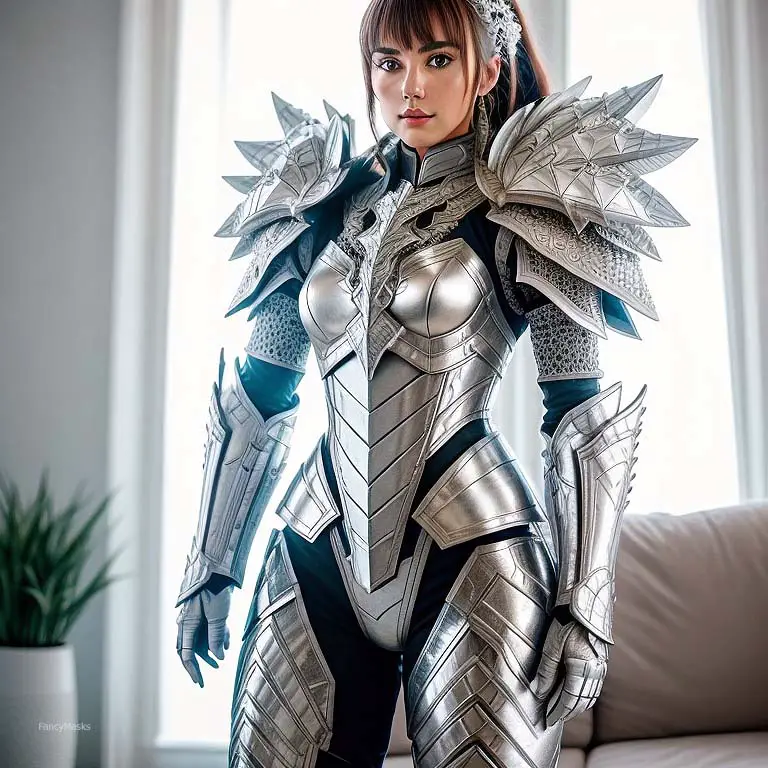
For instance, Bondo—a type of body filler—is typically used to smooth out uneven surfaces or fill in gaps. While it has its origins in automotive repair work, it has found its place in cosplay armor creation due to its easy application process and durable results.
After applying Bondo and allowing it dry fully, armor pieces would often be primed with a suitable primer ensuring paint adheres better while also highlighting any areas that might need further smoothing. The next step often involves sealants which can transform the look of your base material radically; making craft foam resemble shiny metal or weather-worn leather.
And then comes painting—a process that demands patience and precision—to give life to your creation using acrylic paints. Remember though that all these desirable finishes cannot be achieved without meticulous patterning at the start—so don’t forget about drafting tools!
Things like rulers, compasses, tape measures are indispensable when creating patterns for your armor pieces from scratch. Additionally, hot glue guns are significant players here: they act as fast-acting adhesives which bond pieces together quickly yet effectively.
They’re particularly useful when working with craft foam or attaching trimmings or embellishments. : while investing in quality tools might seem daunting initially due their costs—particularly more specialized ones like Dremels and heat guns—it’s important not only for achieving professional results but also because they tend to last longer making them cost-effective over time.
Cost Analysis: Bought vs Homemade
Before you embark upon the journey of crafting your own cosplay armor, conducting a thorough cost analysis is imperative. It’s beneficial to weigh the costs and benefits of both scenarios: buying a ready-made piece and creating one from scratch.
When purchasing commercially made cosplay armor, do bear in mind that you’re not just paying for the materials. You’re also compensating for the labor involved in pattern making, mold-making, cutting, shaping, painting, and weathering each piece of gear.
These pieces can be costly due to these multiple stages of production that often involve thermoplastics like Worbla or PVC (Polyvinyl Chloride), which are popular yet pricey materials in cosplay armor-making. In comparison to this professionally made equipment lies homemade costumes designed with love but typically crafted with more budget-friendly materials.
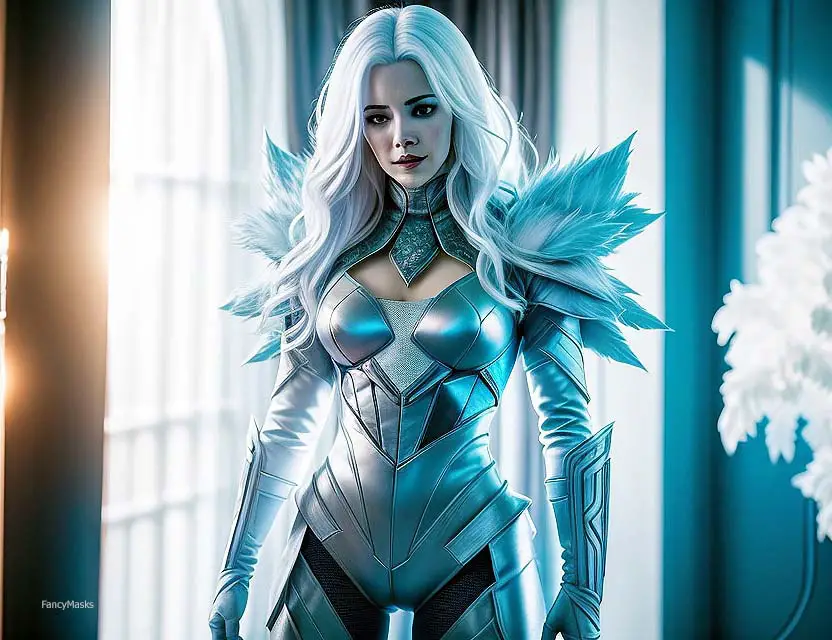
There’s an undeniable satisfaction that comes from constructing your costume by hand using tools such as heat guns for molding EVA or craft foam into shape, dremels for detailing, hot glue guns for assembling pieces together and sealants like primer to protect the base material before painting with acrylic paints. However, there exists a hidden cost when creating your own cosplay armor – time investment.
It may take several attempts at pattern making before achieving an accurate fit or it may involve botched experiments with Bondo or other fillers during the molding stage which might require additional purchases. Bought versus homemade costumes both carry their distinct advantages and disadvantages – on one hand there is ease and professionally finished products but on the other hand lies creative freedom along with cost savings if planned right.
The choice between them largely depends on your personal preference – whether you value time over money or vice versa. Therefore it becomes essential to consider these factors while deciding between purchased vs handmade costumes: initial costs of materials such as thermoplastics vs EVA foam or PVC; tools needed like heat guns and dremels; time investment in learning processes like patterning & molding; potential errors leading to extra expenditures; eventual look & durability of final product etcetera before arriving at a firm decision about whether buying pre-made is more effective than going DIY route based on budget constraints & personal goals.
Prioritizing Your Budget
Creating a striking piece of cosplay armor can be a dream come true for enthusiasts, but it often comes with substantial costs. Hence, understanding how to prioritize your budget effectively is essential.
A thoughtful approach to budgeting ensures that you do not overspend and focus on investing in areas that give the most return concerning durability, aesthetics and comfort. For instance, one of the initial steps in building cosplay armor involves patterning.
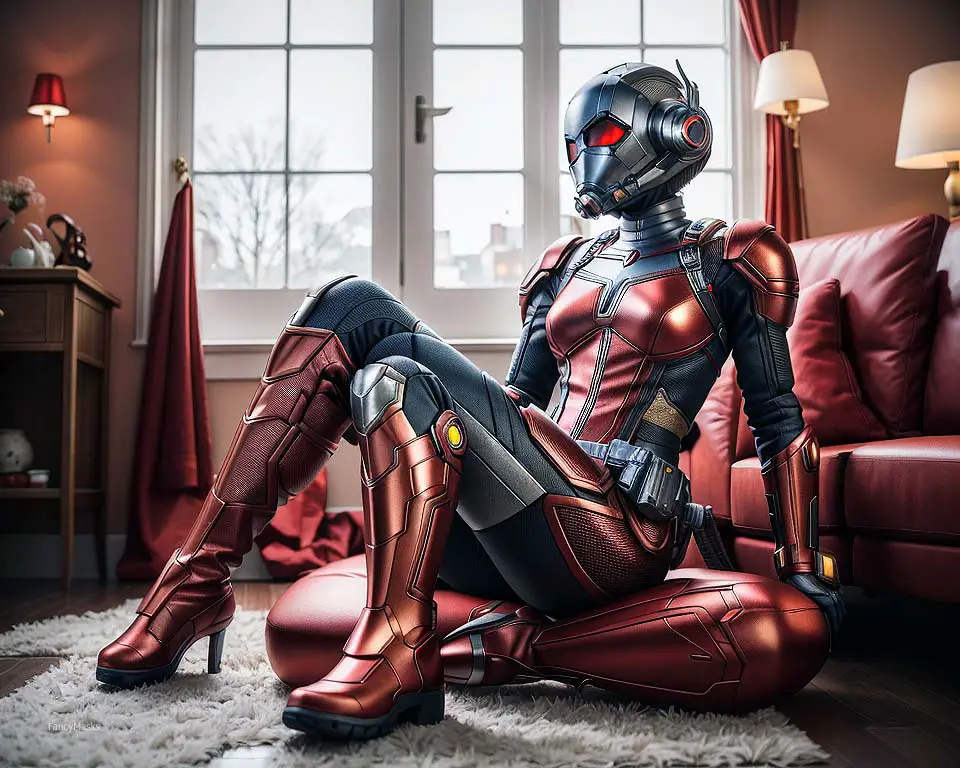
Patterning is an integral part of the process as it determines the accuracy and fit of the armor. Despite being critical, it doesn’t require expensive resources – graph paper or any large paper for tracing patterns will suffice.
Investing heavily here wouldn’t significantly improve your end results, instead allocating more funds to materials like PVC (Polyvinyl Chloride), EVA foam or Worbla might be more beneficial. PVC pipe is reasonably priced and when heated with a heat gun can be molded into numerous shapes; this makes it an excellent choice for various parts of your armor.
EVA foam is versatile and ideal for adding intricate details to your costume without adding weight or costs. Heat guns are vital tools in shaping these materials but don’t need to be high-end models; an entry-level heat gun would serve perfectly well.
In contrast, when working with robust materials like Worbla – a popular brand of thermoplastics favored by many cosplayers – high-quality mold-making tools become pivotal for achieving precision and detail. Therefore, investing in better quality molding tools could substantiate better returns than spending excessively on pattern-making supplies.
Craft foam proves itself as another cost-effective material for creating superficial details on your costume while adding minimal weight — however, remember that sealants are required to protect these details from damage or degradation over time. Acrylic paint can then bring color and life into your creation without breaking the bank.
Weathering techniques using inexpensive items like shoe polish or pastel chalks can add realism by simulating grime or battle damage. Conversely, some areas might require you to splurge a little extra from your budget pot — Bondo (a type of body filler), used sparingly, provides an excellent way of smoothing out irregular surfaces on your build or filling gaps where different pieces meet together; Dremel tools offer unparalleled versatility when engraving detailed designs into thick materials like PVC pipe; a durable primer guarantees that subsequent layers of paint adhere properly onto different surfaces.
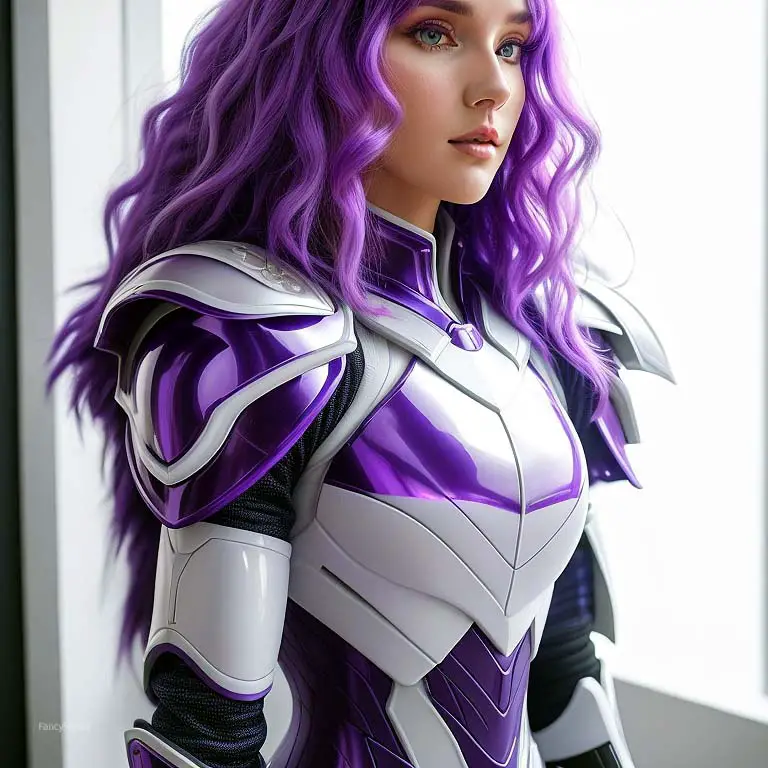
Budgeting for Time: The Forgotten Factor
When creating a budget for your cosplay armor, an easily overlooked but significant aspect is time. Time, undeniably, is a resource as valuable as any material or tool you might acquire. If not well accounted for, it can impact your budget substantially.
Just like the actual resources utilized in the making of armor – such as craft foam or Worbla – your time needs to be factored in and managed effectively. In the initial stages of creating armor, patterning consumes a large chunk of time.
Patterning is crucial because it serves as a blueprint that guides the construction of each piece. It involves careful measurements and perfecting shapes so that they fit together seamlessly.
Consequently, if not planned for properly, you may find yourself using your heat gun and hot glue gun repeatedly to reshape pieces of EVA foam or PVC (Polyvinyl Chloride) that do not fit together correctly due to inaccurate patterns. Next comes the cutting and shaping phase where tools like Dremel are vital.
Shaping pieces with heat often require thermoplastics such as Worbla which can be quite time-consuming due to its trial-and-error nature. It’s also worth noting that different materials require varying lengths of work time; EVA foam is much easier to shape than PVC or Bondo when using a heat gun.

Once your pieces are cut and shaped satisfactorily comes another often lengthy process – painting and weathering which gives your armor realism by simulating wear-and-tear details on surfaces where battles would have left their marks over time. Herein lies another opportunity for meticulous planning with regards to how long each coat of primer or acrylic paint takes to dry before you can move on to the next step; applying sealant after painting slows down this process even more considerably.
How to Save Money on Cosplay Armor
When it comes to saving money on cosplay armor, there are several strategies that you can employ. First and foremost, think about repurposing materials. There’s a bounty of craft items that are often discarded or overlooked in your everyday life that can be transformed into fantastic costume pieces.
Old plastic containers, for instance, can be heated and reshaped using a heat gun to create the base for your armor pieces. Craft foam, often found at dollar stores or in the clearance section of craft stores, can also be layered and shaped with heat to bring your design to life.
Another cost-effective method is using EVA foam instead of more expensive materials like Worbla or other thermoplastics. EVA foam is lightweight and affordable, yet remarkably durable and versatile when it comes to crafting armor pieces.
PVC pipes can also serve as sturdy frames for larger props and weapons while remaining budget-friendly. Once you’ve crafted your pieces, a coat of sealant will protect them from damage while primer will ensure paint adheres properly providing a professional look.
Investing in high-quality basic tools such as a Dremel tool or a hot glue gun could potentially save you money in the long run by allowing more precise work which reduces waste. A Dremel tool allows for intricate detailing on the foam or PVC before being painted with affordable acrylic paint while a hot glue gun ensures secure connections without the need for pricey adhesives.
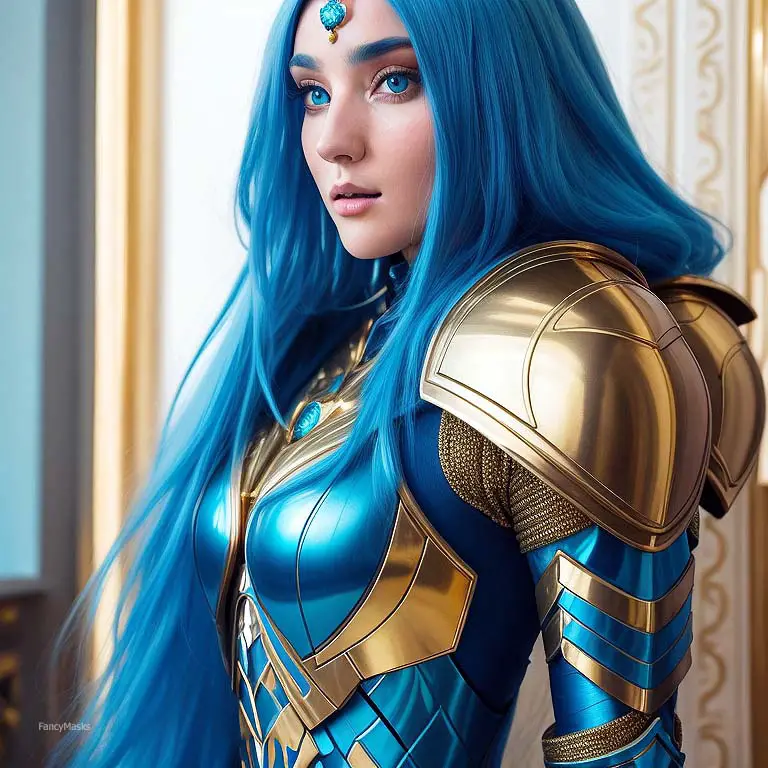
The process of creating your own molds through mold-making techniques could offer substantial savings over buying individual pre-made parts or accessories too. By mastering this skill set you’re able to create repeatable items which means less material waste overall.
Patterning plays an important role as well; spending time perfecting patterns out of newspaper or cheap fabric before transferring them onto your final material could curb unnecessary wastage and help keep costs low. One cannot forget about weathering – this technique enables cosplayers to make new items appear old and worn out adding depth and realism to their costumes without having to invest in expensive texturing tools; simple household objects like sandpaper combined with careful application of acrylic paints do wonders here.
Bonding multiple layers together using Bondo filler putty provides another cost-efficient way of creating texture on armor parts without requiring additional materials – an added bonus is its sandable nature allowing fine-tuned adjustments after application ensuring near-perfect results every time. There’s no need to break the bank while crafting cosplay armor – by creatively repurposing household objects, selecting affordable materials such as EVA foam over pricier alternatives like Worbla thermoplastics – combined with smart investments in necessary tools like Dremels or hot glue guns allows even those on tight budgets craft epic cosplays worthy of any convention floor.
DIY Tips and Tricks: Saving on Costs, Not on Quality
Crafting a compelling cosplay armor piece can be a daunting task, especially when you’re working on a tight budget. But with some clever DIY tips and tricks, one can save significantly on costs without compromising on quality.
The secret lies in smart material choices and honing certain skill sets that can elevate the look of your cosplay armor. One of the best ways to reduce costs is by utilizing inexpensive materials like craft foam or EVA foam instead of pricier options like Worbla or other thermoplastics.
These materials are not only affordable but also highly versatile and easy to work with. Patterning is an essential step in creating your armor, and both craft and EVA foam are excellent for this process as they are flexible, durable, and easy to cut into intricate designs.
With a heat gun, you can shape these foams to fit any part of your body accurately. A word of caution: while using a heat gun for molding these foams into desired shapes, ensure that you’re doing it in a well-ventilated area as heating PVC-based materials might release toxic fumes.

Another crucial aspect of crafting quality cosplay armor on a budget is understanding how to simulate more expensive materials. This is where the artistry truly comes into play.
Just because you’ve chosen cheaper materials doesn’t mean your final product should look cheap too. For instance, using “weathering” techniques helps create an impression of metal or leather which would otherwise be expensive to obtain for costume making.
After shaping your armor piece, it’s time for painting and finishing touches – another opportunity to be thrifty without skimping on quality! Primer can fill small imperfections or dents occurring while crafting the base piece before moving onto painting stage.
Acrylic paint is an economical option that offers high pigmentation ensuring vibrant colors while maintaining its affordability. Working with sealants like Mod Podge or Plasti Dip not only reinforces your armor but adds an impression of solidness often associated with metal armors at very low cost.
Bondo – typically used for automotive repairs – works wonders in filling gaps between pieces before applying primer; it’s cheap yet effective solution for seamless joints in armors! To add more detailing while keeping costs down consider investing in tools like Dremel which helps carve intricate designs directly into foams!
However; remember that it’s not always about having every tool available but mastering ones you have; hot glue guns used right could substitute other adhesives saving up costs without detrimentally affecting final products look or strength! These creative solutions allow even those on stringent budgets to participate fully in the world of cosplay armor-making without sacrificing either quality or their wallet’s health—proving once again that creativity knows no bounds nor does it require extravagant spending!
Choosing Cheaper Alternatives Without Sacrificing the Look
Crafting cosplay armor often necessitates the use of versatile and robust materials. However, these materials can sometimes bear a heavy cost which might be burdensome for cosplayers working on a budget. Yet, there are alternatives available that permit the creation of high-quality armor without incurring exorbitant costs.
Thermoplastics like Worbla are popular choices among cosplayers for their pliability and durability. While Worbla may sometimes be on the pricier side, a cost-effective substitute can be craft foam covered in primer and painted over with acrylic paint.
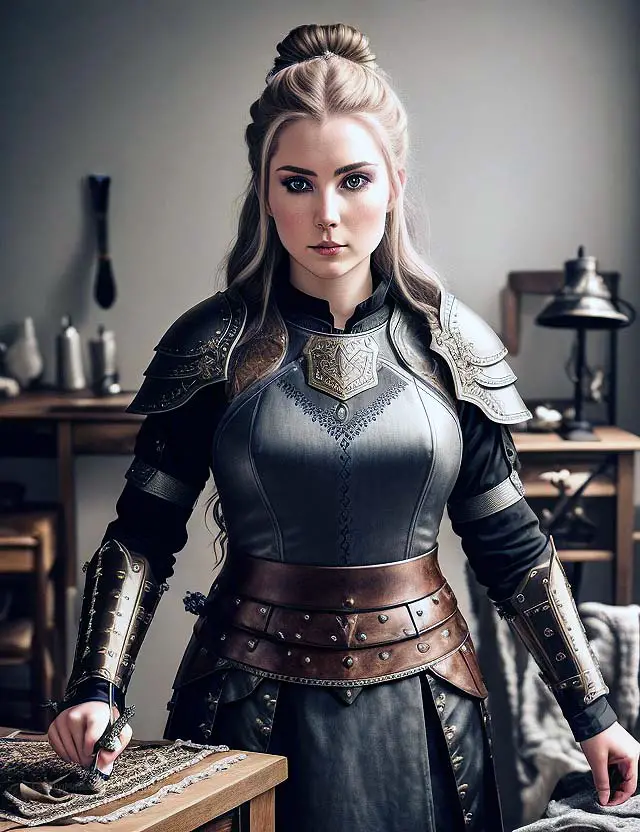
Craft foam is much cheaper than thermoplastics but when carefully sealed with primer and enhanced with quality acrylic paint, it can mimic the look of more expensive materials remarkably well. EVA foam is another economical alternative worth considering.
When treated with a heat gun, this material becomes malleable and easy to shape into various parts of your armor. After cooling down, it retains its new form while remaining lightweight yet sturdy.
It’s perfect for those larger armor pieces which demand both structural integrity and comfort from weight considerations. For detailing your cosplay armor, instead of going for expensive mold-making processes or buying pre-made details, you could opt for using hot glue gun techniques or Dremel carving on EVA foam or PVC (Polyvinyl Chloride).
Both methods require some practice to master the skills but once you get hang of it, they will allow you to add intricate details to your costume without costing a fortune. Weathering is another technique that can make less costly materials appear more valuable than they really are by giving them an aged or battle-worn appearance.
This involves using techniques like dry brushing with darker colors on higher areas or adding scratches using tools like sandpaper or even serrated kitchen knives. An important step not to forget is sealing your armor piece properly before painting over it – especially when working with foams.
A proper sealant layer helps in achieving smoother surfaces that resemble metallic finishes better once painted over but also protects your base material from potential damages during usage at conventions. Through creativity and resourcefulness in utilizing tools such as hot glue guns; selecting affordable yet durable materials such as EVA foam; employing painting techniques such as weathering; and ensuring protection through effective sealants – one can indeed create impressive cosplay armors without breaking the bank.
How to Maintain Your Armor on a Budget
The enchantment of cosplay lies not just in the creation and donning of fantastical armor, but also in its rigorous maintenance. Preserving your meticulously crafted armor on a budget might seem like a daunting task, yet when approached with careful strategy and foresight, it can be quite achievable.
Firstly, there’s an essential element to keep in mind: prevention is better than cure. Armor chiefly constructed from materials such as EVA foam, Worbla, or PVC (Polyvinyl Chloride) benefits significantly from being stored correctly.
Keep your pieces in a cool, dry place away from direct sunlight to prevent warping caused by excessive heat or moisture damage. Mold-making of individual pieces for complex designs can ensure an exact replica if the original wears out or gets damaged.
However, this might increase initial costs but will save you money in the long run. The tools you’ll need for maintenance are often similar to those used during construction.
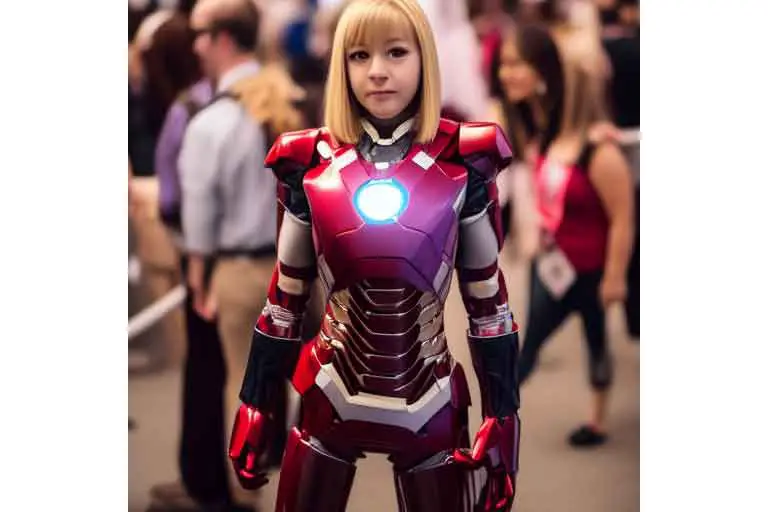
The heat gun that was crucial during the crafting process becomes handy again here for minor repairs and alterations on thermoplastics like Worbla. A Dremel tool is invaluable for smoothing rough edges that may have developed over time.
When it comes to specific maintenance tasks, one cost-effective approach is weathering your armor intentionally as part of its design aesthetic. Not only does this add visual appeal and authenticity to your costume’s appearance by mimicking battle wear-and-tear but also camouflages any inevitable scuffs or scratches acquired during its use.
If your armor pieces start showing signs of wear beyond what could be passed off as intentional weathering, materials such as Bondo putty can come into play; they are excellent for filling gaps and smoothing surfaces before repainting. Primer should be applied before adding color with acrylic paint and then sealed using a protective sealant once dry.
Patterning plays a crucial role here too – having your patterns saved can save you invaluable time if you ever need to recreate parts down the line using more affordable materials like craft foam instead of more pricey options. Don’t underestimate the power of hot glue guns; these humble devices are often overlooked but they’re excellent for quick fixes at conventions or photo shoots!
They’re also great for attaching moldings made from craft foam onto main body structures composed largely of economical EVA foam or other thermoplastics! – while maintaining your cosplay armor does require effort and some investment – with smart planning and practical techniques it’s possible even on a tight budget!
Financial Mistakes to Avoid When Creating Cosplay Armor
As we progress through the journey of creating cosplay armor, it’s essential to steer clear of certain financial pitfalls that could potentially hinder your project’s success. One common mistake many budding armor crafters make is not investing in a proper patterning process. Patterning, the process of creating templates for your pieces, can often be overlooked in the excitement of jumping headfirst into construction.
However, neglecting this vital step could lead to costly miscalculations in material use. A well-planned pattern ensures that you utilize materials such as EVA foam or PVC (Polyvinyl Chloride) with maximum efficiency, eliminating wastage and unplanned expenditures.
Another mistake often made is opting for cheaper versions of necessary tools and materials which may end up compromising on quality and durability. Craft foam might seem like a budget-friendly alternative to EVA foam or Worbla, but if it doesn’t withstand weathering or hold up under layers of paint and sealant, you risk spending more in replacements and fixes.
Similarly with paints; while acrylic paint might seem economical at first glance, its lack of flexibility might cause it to crack on bendable parts where Bondo would have been a superior option. The same goes for tools; a cheaper heat gun might take longer to heat thermoplastics like Worbla, consuming more electricity over time than a slightly pricier yet more durable model.

Failing to account for costs beyond raw materials is another common blunder made by novices. Remember to budget not only for your base materials but also for additives like primer before painting, sealants after painting and weathering treatments post-sealing as well as small but crucial elements like hot glue sticks for your hot glue gun or replacement bits for your Dremel tool used in mold-making tasks.
Each unbudgeted material has the potential to inflate the overall cost prohibitively. Remember that DIY does not equate being thrifty all the time; there are instances when buying pre-made components makes better fiscal sense than crafting them yourself – especially when considering equipment expenses and potential trial-and-error material wastage involved in mastering new techniques.
Conclusion
So that’s our guide to how to budget when you are creating cosplay armor. We’ve created a full guide, if you’d like to learn more about crafting cosplay armor, We have an active community of people who enjoy cosplay and attending conventions. We’d love to see your creations if you’d like to tag us on our instagram page. We often share images with a link to their original creator.



